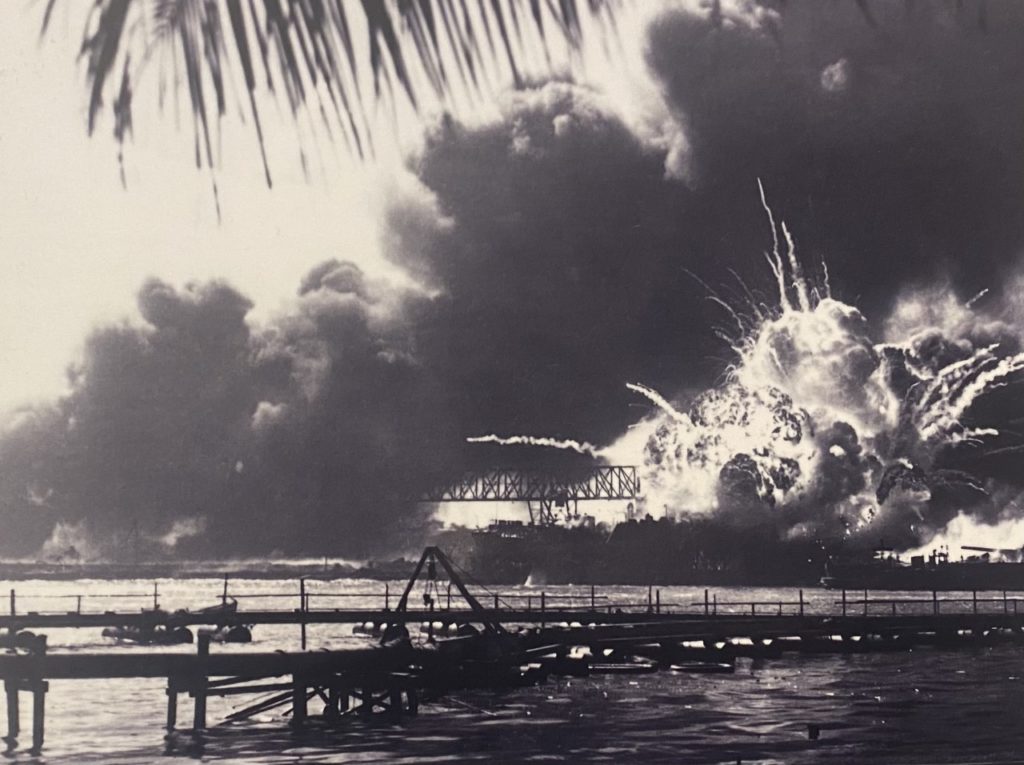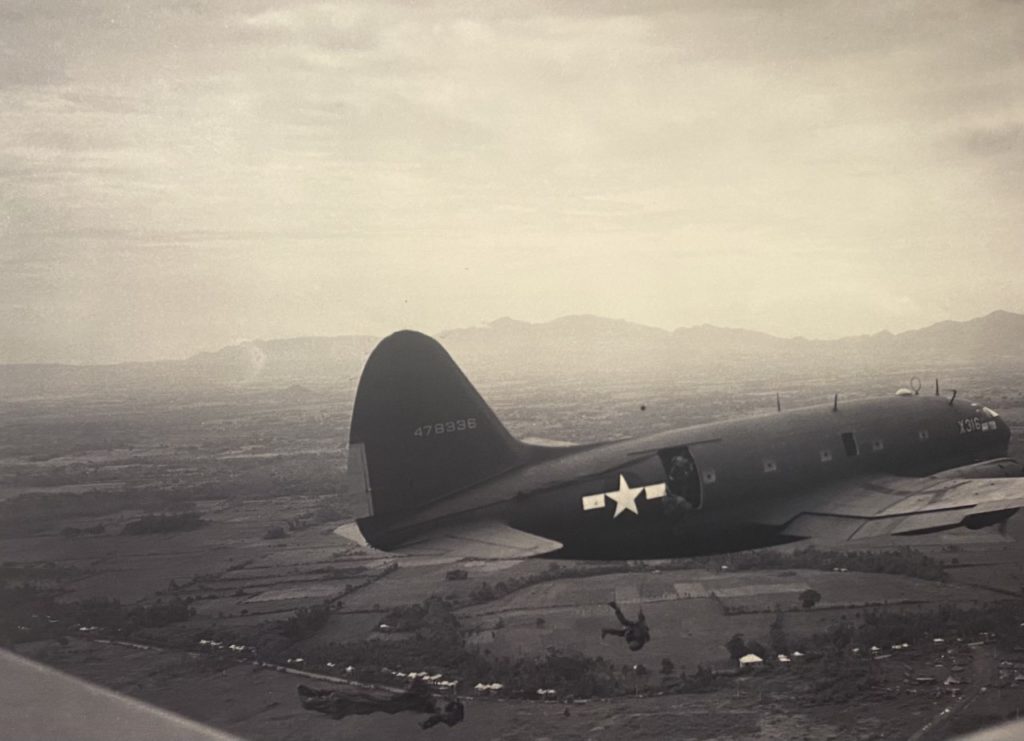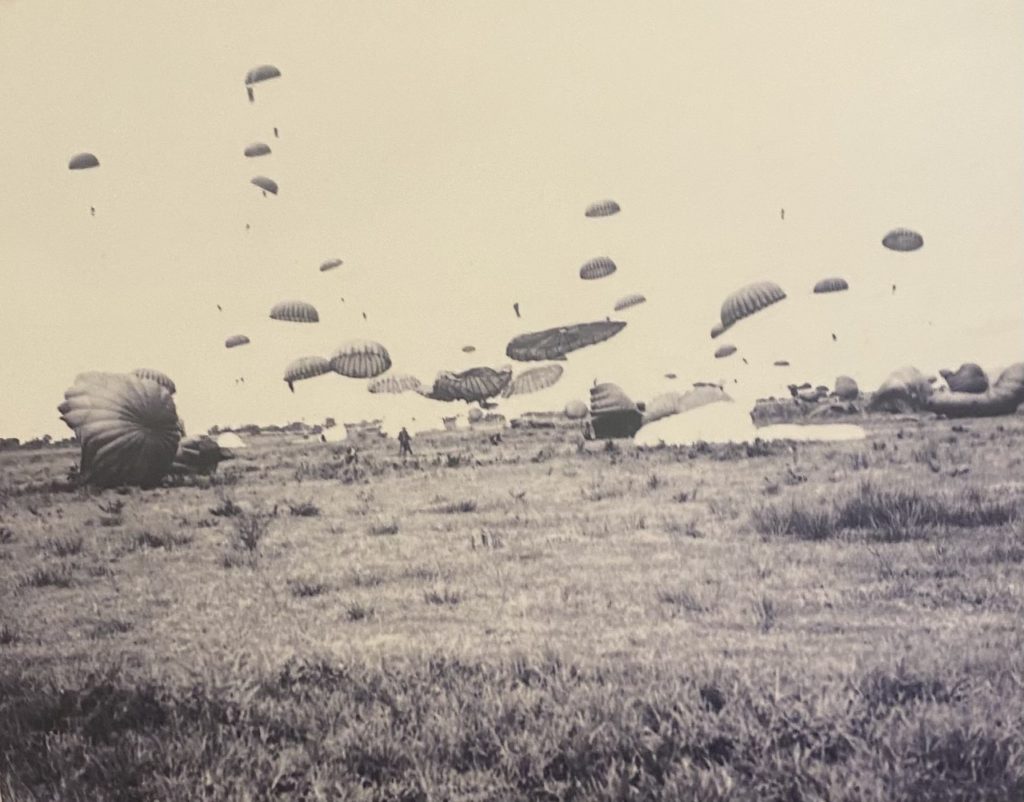Pearl Harbor: A Day of Infamy
“Yesterday, December 7,1941, a date which will live in infamy, the United States of America was suddenly and deliberately attacked by naval and air forces of the Empire of Japan”
President Franklin D. Roosevelt to Congress – December 8, 1941
Japan Attacks in the Pacific
Japan’s sudden and brutal attack against the American naval base at Pearl Harbor, Hawaii, on Sunday, December 7, 1941 left most of the Pacific fleet in ruins and 2,403 servicemen dead, including 1,103 entombed in the battleship Arizona. With American military power temporarily blunted, Japan was free to move military forces across Southeast Asia and the Pacific basin, quickly conquering Malaysia, Burma, the Philippines, parts of New Guinea and a host of small islands. By June 1942, Japan ruled much of the Asiatic-Pacific region and her naval and air forces lurked at the gates of Australia.

Adolf Hitler was impressed with the Pearl Harbor attack, so much so that Germany declared war on the United States on December 11, 1941, immediately dispatching submarines to attack ships along the U.S. coast. Hitler’s action guaranteed that America would fight in Europe as well as the Pacific, and although the situation in early 1942 was grim for the Allies, time would bring the “inevitable victory” that President Roosevelt promised on December 8, 1941, before a joint session of Congress. The Japanese offensive in the Pacific came to an abrupt end on June 4, 1942 near the tiny island of Midway. There, the U.S. Navy destroyed the pride of Japan’s Navy , a force of four aircraft carriers bearing 270 aircraft. Pearl Harbor was avenged, at least in part, and America was prepared to counterattack. Army parachute, glider and Special Operations forces would join in the march across the Pacific to defeat Japan.
Joining the Pacific counteroffensive were the 503rd Parachute Infantry Regiment, 11th Airborne Division, Detachment 101 of the Office of Strategic Services (OSS), Merrill’s Marauder’s, 6th Ranger Battalion and Alamo Scouts. The 503rd conducted important parachute assaults in New Guinea, and most notably, at Corregidor Island in the Philippines. Major General Joe Swing’s 11th Airborne Division made parachute, glider and seaborne assaults in the Philippines. “Det 101” and Merrill’s Marauder’s attacked the Japanese Army in the jungles of Burma, effectively blunting the enemy’s offensive capabilities.


Did you enjoy this content? Please consider giving a gift to the ASOM so the legacies of Airborne and Special Operations Soldiers can stay alive for generations to come.



